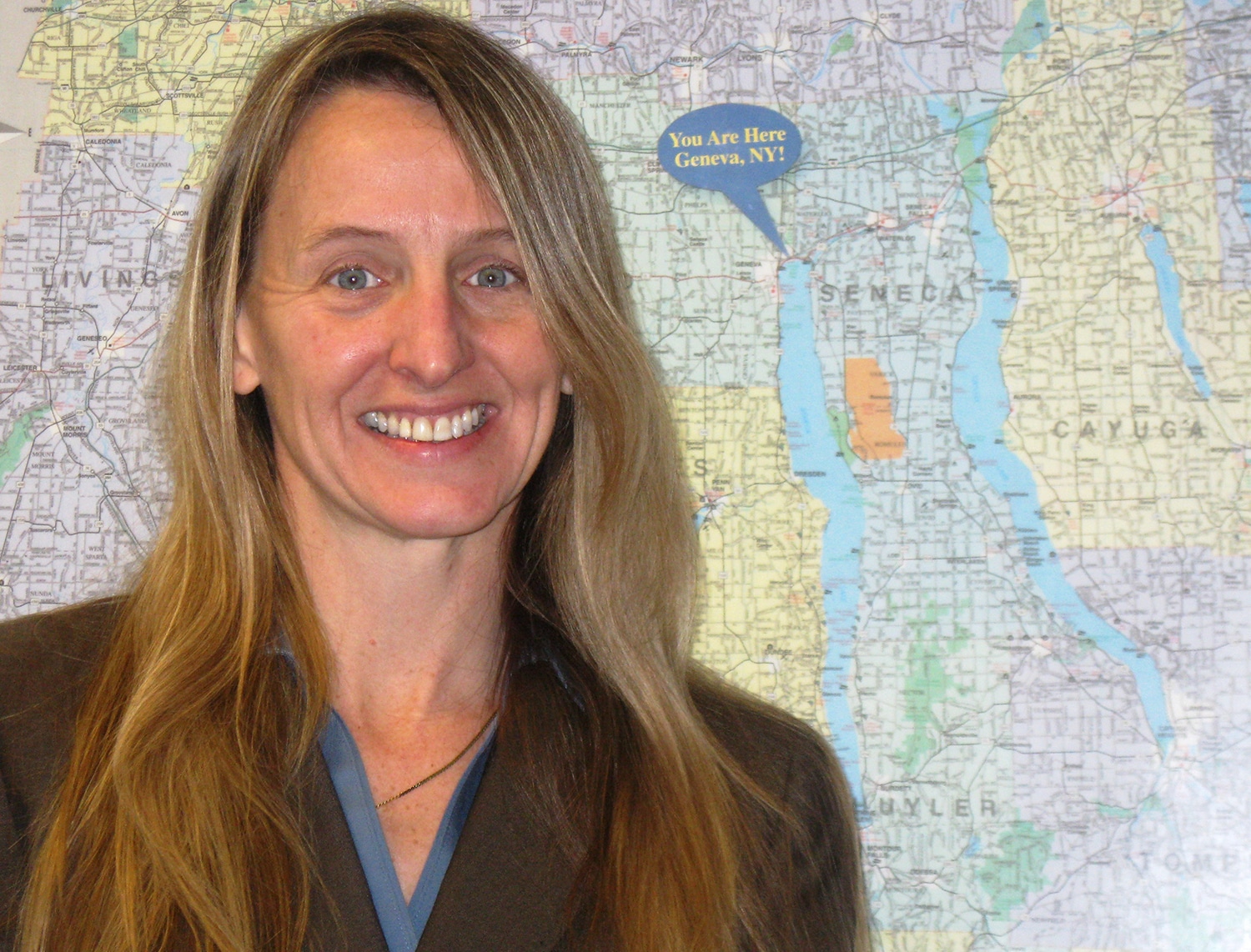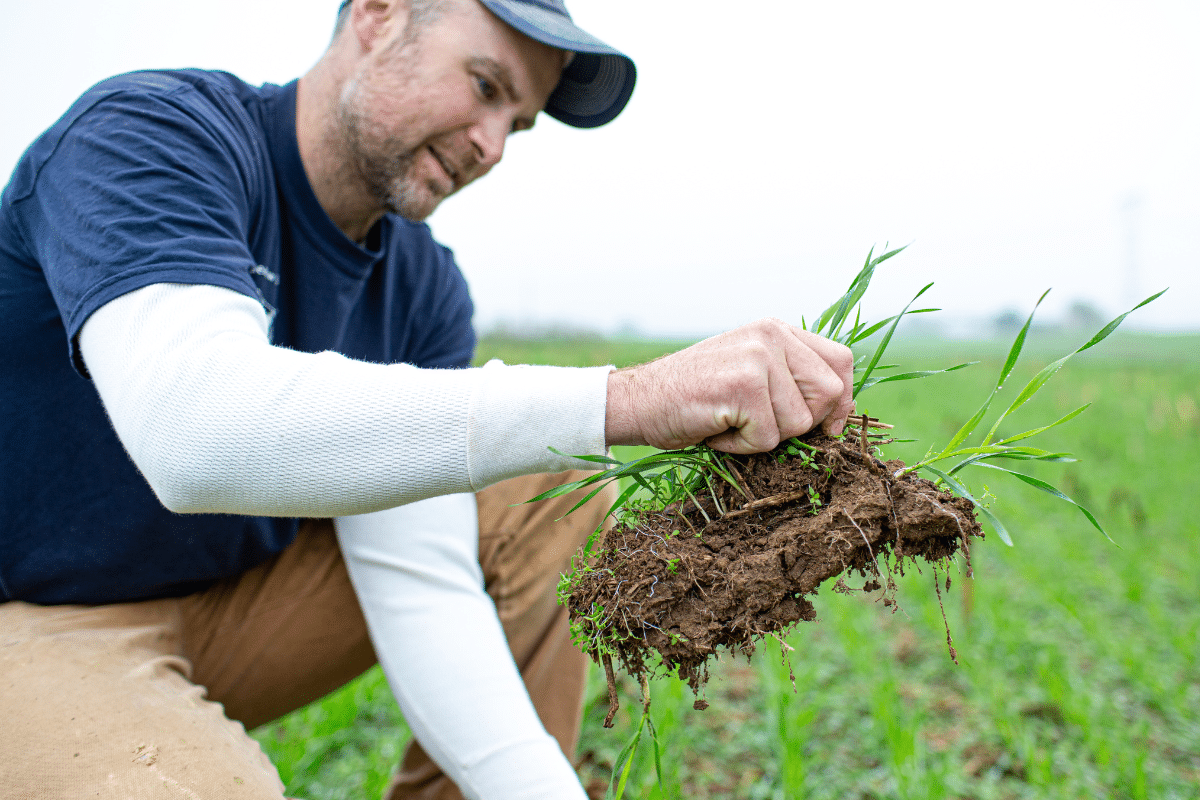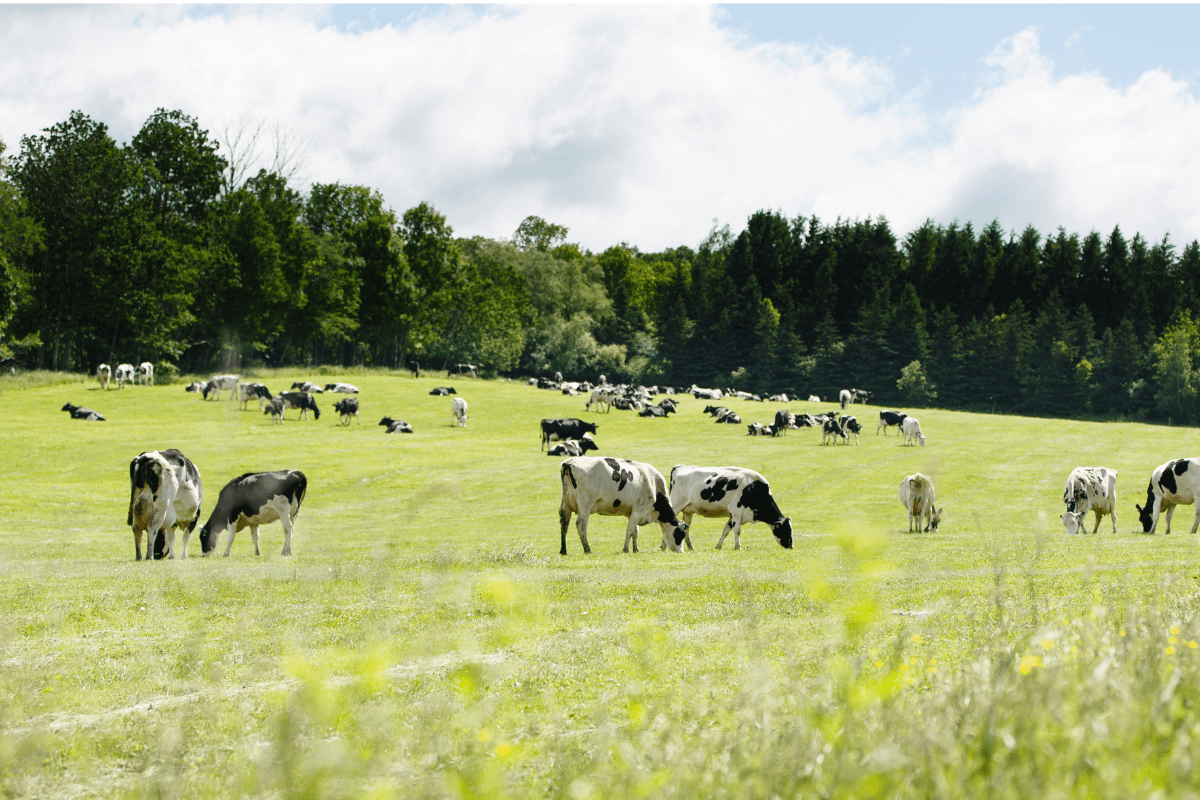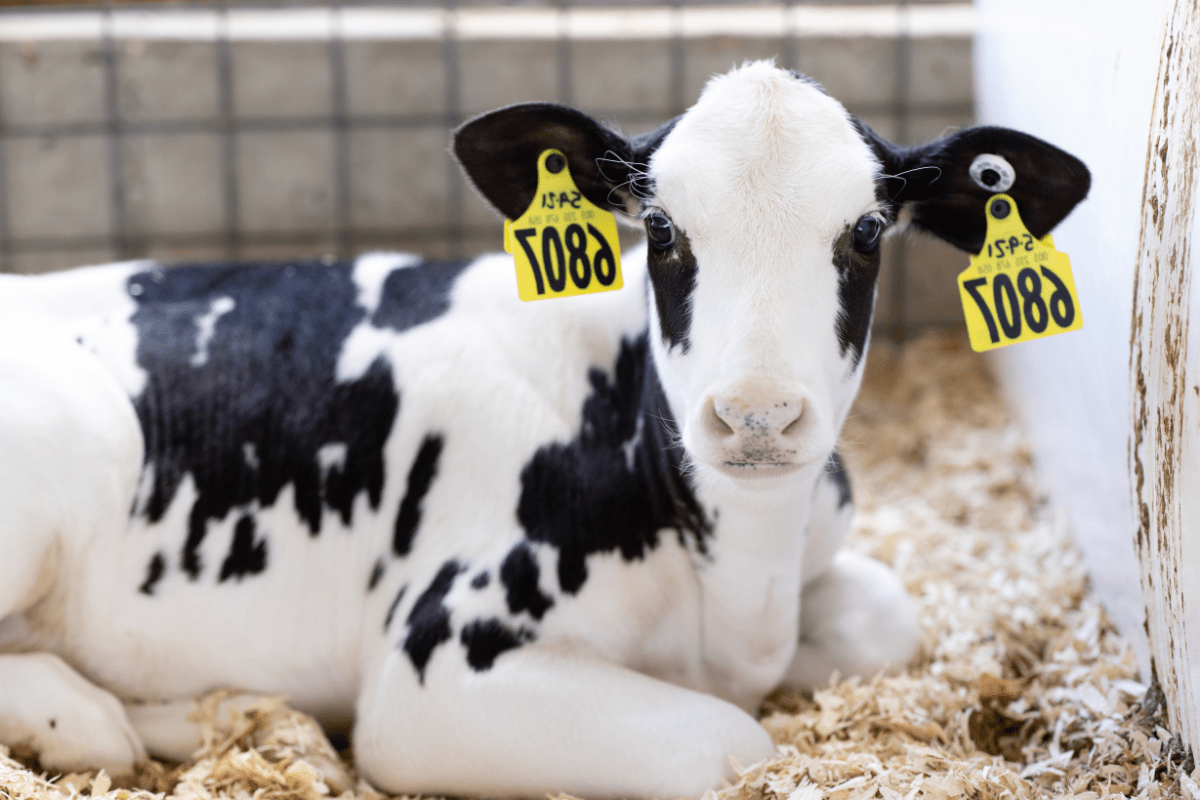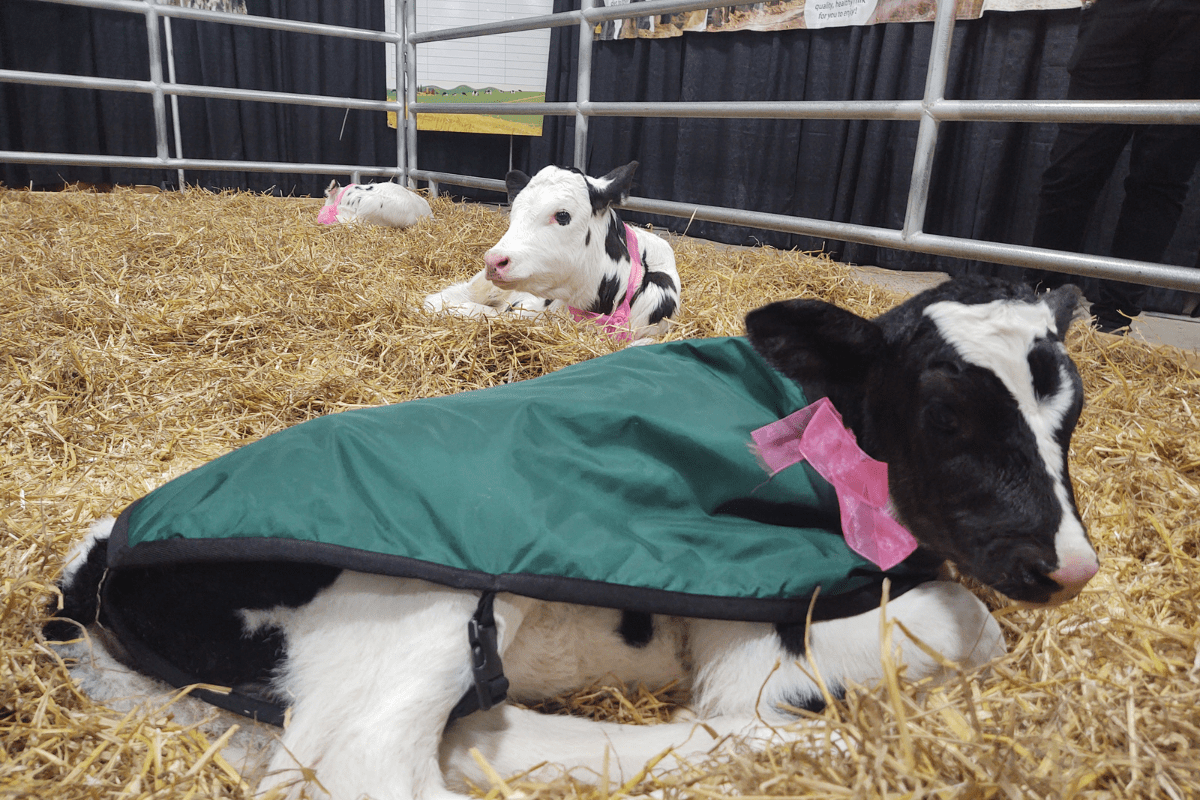When it’s blustery cold out and the snow is piling up, dairy farmers take extra measures to keep cows cozy. Thanks to the animals’ thick skin, hair and natural insulation, cows prefer temperatures a little cooler than most humans. Cows don’t mind the cold when they are well fed, healthy and have dry bedding. But even they can only tolerate so much.
Keeping animals warm in the winter is a special area of focus that Mapleview Dairy is dedicated to. The New York dairy farm is located about 10 miles from the Canadian border — meaning that they have some of the coldest winters around.
LouAnne King, one of the owners at Mapleview Dairy, shared some of the ways their farm – and other dairies – keep their calves and cows warm and toasty through the coldest months of the year.
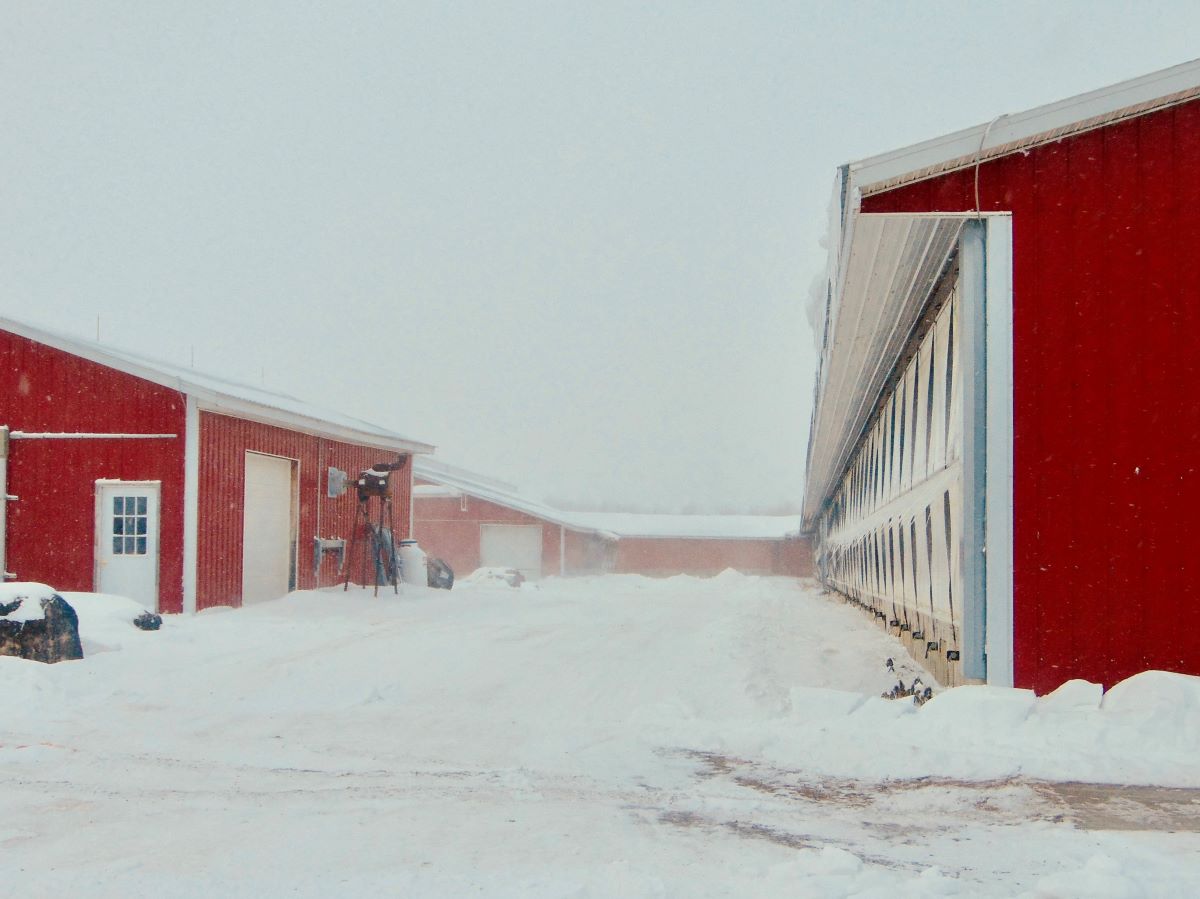
Nutritious Feed for Thicker Coats
Biology plays a key role in how dairy farmers care for their animals. Calves and cows grow a thicker coat in response to colder temperatures, but to do that, the animals need to be fed a high quality, nutritious diet that provides enough energy for them to grow the additional hair.
The normal temperature for a healthy cow is between 101-102 degrees Fahrenheit, warmer than humans’ normal temperature. This is in part because, when cows digest their food, the process called fermentation creates heat. One way that cows thermoregulate themselves or keep warm when it is cold out is by eating more food. Just like they do with calves, dairy farmers make sure they balance the cows’ diets appropriately by increasing energy components or amounts of food available to meet the cows’ needs.
“Each winter we increase all of the animals’ access to feed to make sure they can eat enough to not only maintain, but also grow and produce high quality milk. We work really closely with our nutritionist or a cow diet specialist to ensure that all of the animals on the farm are getting the best diet for the season,” says King. Her husband works as a dairy nutritionist as well, giving King extra insight into how nutrition and diet help support cows in the winter. “With the calves,” says King, “we actually increase the amount of milk they are fed each day and include an extra feeding to give them an extra warm boost.”
Cozying Up With Calf Jackets
Along with extra milk in the colder months, Mapleview Dairy provides each calf with a warm jacket to wear through the coldest days of winter. These jackets are water and wind resistant, and have a batting filling for extra warmth — much like the “puffer” jackets that people wear.
“Besides the jackets, we also add extra fluffy straw bedding in their calf hutches and adjust the ventilation to make sure they are warm enough, but still have plenty of fresh air,” says King. “We are constantly monitoring the temperatures and adjusting all of these management strategies to make sure our calves stay comfortable. If we have 40-degree swings, we are sure to remove or add jackets – just like people remove or add jackets or mittens.”
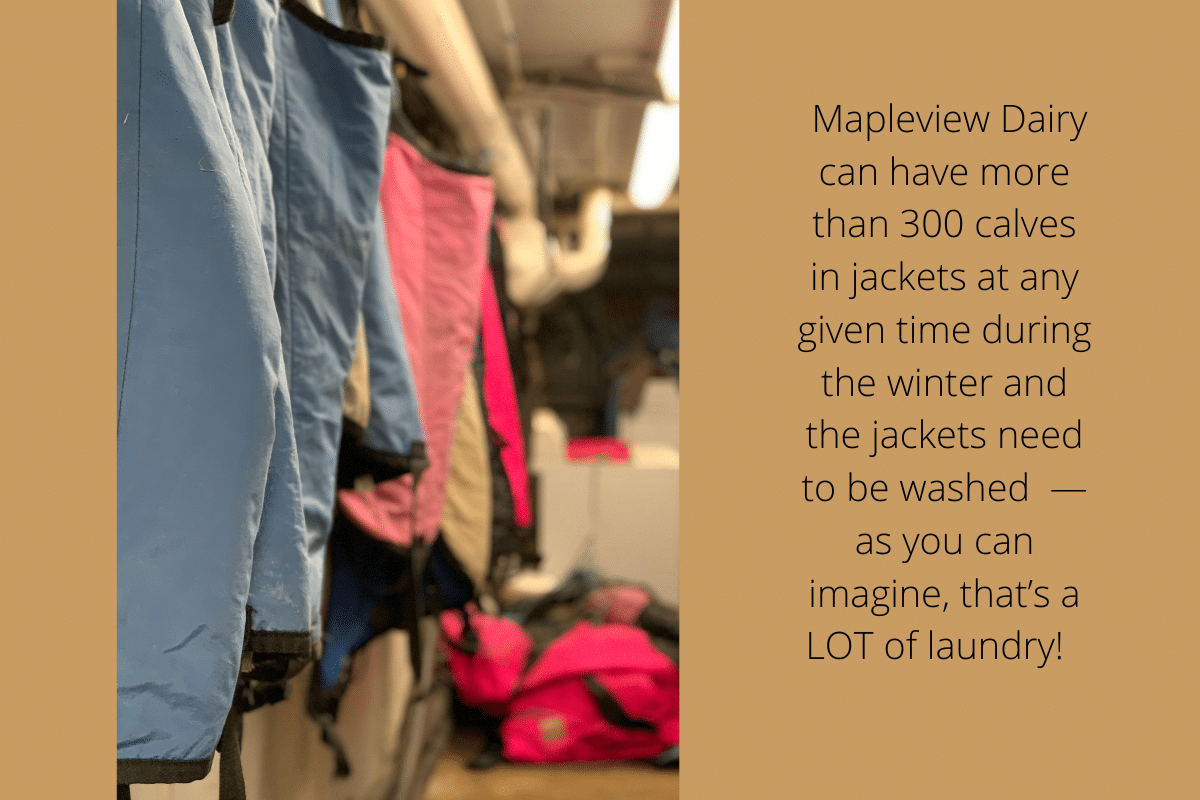
Barn Climate Control Technology

“We have really focused on using more technology to help take even better care of our cows in the winter,” says King. The dairy farm uses this technology to not only care for the cows, but also to reduce energy usage and improve long term sustainability.
“We invested in software and sensors to monitor the temperatures, wind speeds, fans, lights, and side curtains on the barns. This takes the ‘human error’ out of the equation so we can adjust to the weather as it changes in real time,” says King. By monitoring the weather in real time and having control of all these barn tools, King says the farm can quickly adjust to the changing conditions to keep cows at consistent, comfortable temperatures.
Adjusting curtains to block wind while keeping some vents open to provide quality air flow keeps cows happy and healthy. By only adjusting certain barn factors when the weather demands it, the farms can conserve energy and reduce their environmental impact.
Want to see more about caring cows for the winter? Check out these other cool stories! (pardon the pun!)


